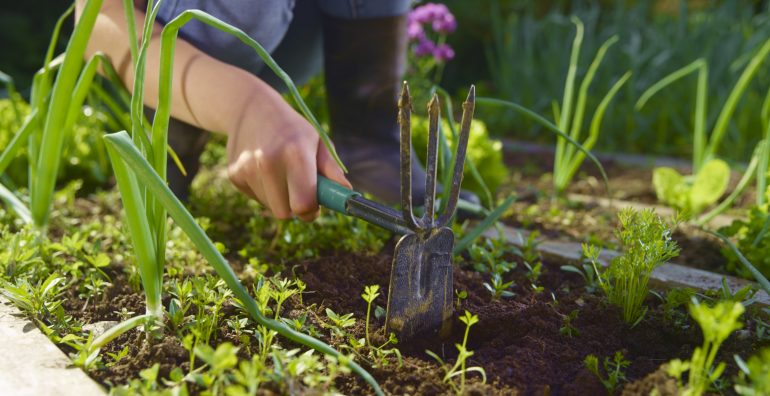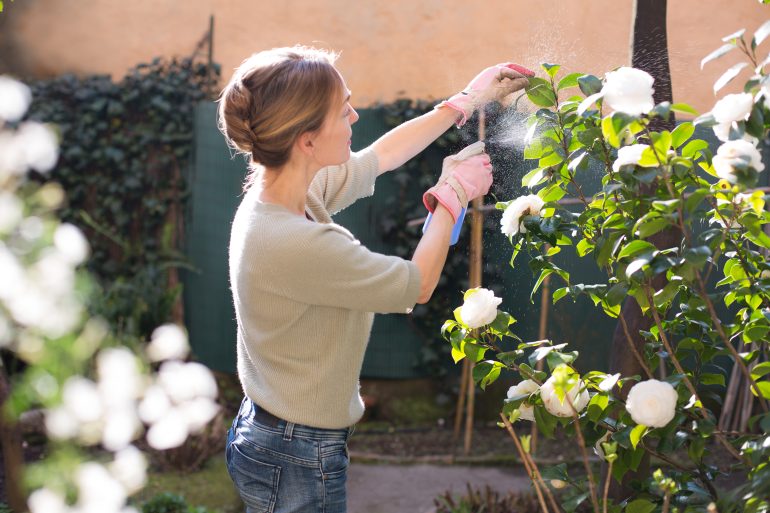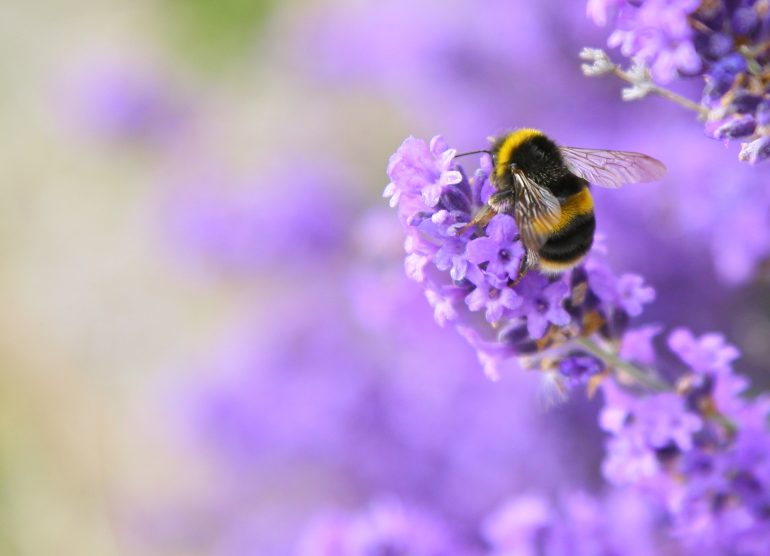Your garden in July should look lush, bright and full of life. Summer is here and you should now be reaping the benefits of all the hard work and effort you put in during the first half of the year.
However, if you don’t stay on top of your garden, things can quickly spiral out of control and there are lots of things to do in the garden in July for UK gardeners.
Harvesting, mowing, watering and sowing are top of your gardening jobs for July list and you can also start preparing your garden for the cooler months of autumn. It never stops!
General Garden Maintenance

Garden weeding (Photo: simonkr via Getty Images)
On occasion, the weather in the UK in July can get very hot, so it’s prudent to protect your plants from extreme heat. There are a number of shading options available and it’s vital you keep everything in your garden well watered.
One option is known as thermal mass. This involves adding bricks, large stones or pieces of ceramic or clay to your beds and borders. They absorb heat energy from the sun and once the temperature drops at night, it’s slowly released.
A key maintenance task and one of the most important jobs for the garden in July is to stay on top of your weeds. Little and often is a gardener’s mantra so that you’re not overwhelmed, and organic mulch can help to suppress the proliferation of weeds.
Lawn Care

Lawn care (Photo: Isabel Pavia via Getty Images)
Looking after your grass is one of the gardening jobs for July that can’t be overlooked. Mow it regularly to keep it in check, but a top tip for the hotter summer months is to keep your grass slightly longer by raising the cutting height of your lawnmower.
Longer grass carries more moisture, so it helps to feed the grass and keep it green. If your lawn does require some attention or if it’s looking a little patchy, use some fertiliser to give it the nutrients it needs.
Pests & Disease

Treating pests & disease (Photo: Kathrin Ziegler via Getty Images)
During the summer months, checking your plants for unwanted pests and diseases is one of the gardening jobs to do in July that will keep everything in tip-top condition.
Greenflies and blackflies, known as aphids, can be washed off leaves with lukewarm water and a small amount of liquid soap. If you do notice dead or diseased leaves, pick them off.
Another common pest is the lily beetle that will eat your lily leaves and flowers. They can be picked off by hand.
Planning Ahead

Summer Garden (Photo: Lilly Roadstones via Getty Images)
You might think that the July garden tasks on your to-do list is enough, but you should always keep one eye on autumn and winter.
Start thinking about which bulbs, plants, fruits and vegetables you want to plant, taking crop rotation into consideration as well as successional planting.
Fruit & Vegetables

Fruit Tree (Photo: Mint Images via Getty Images)
In your fruit garden, July is predominantly a maintenance month. Thin out your fruit trees and feed potted trees to maximise your crop. You can also prune your cherry, plum and apricot trees.
You should be able to harvest your stone fruits including peaches, nectarines and apricots, as well as your strawberries, blackberries, gooseberries and raspberries. It’s an idea to harvest these on a regular basis so that you encourage the growth of more abundant crops, and to keep the pesky pests away from ripe fruit which they love. Berry harvesting is one of the things to do in the garden in July the kids especially love to do!
There are lots of veggies that will be ready to harvest including garlic, courgettes, runner beans, beetroot, peas, carrots and potatoes, and you can still continue to sow lettuce and onions for a steady supply.
You can now sow seeds for a winter harvest including kale, turnips, some broccoli varieties and winter greens.
Flowers & Plants

Flowers and plants (Photo: itsabreeze photography via Getty Images)
If you have any wildflowers in your garden, ensure they’re well cared for. Not only do they look great, they’re a source of nutrition for bees and butterflies.
One of the necessary gardening jobs for July is to cut back and deadhead your perennials and the abundance of growth in your hanging baskets to encourage new flowers. If you have lavender, you can cut it for drying indoors in a cool, dark place.
Double-check the supports for your climbers and ensure your dahlias are well-watered as they’re an especially thirsty flower.
Feed and prune your roses and hopefully you’ll get a second flush of blooms. Trim back your hedges, because by now birds should have stopped nesting in them but please double-check to make sure.
If your summer garden is lacking a bit of colour, you can buy some beautiful bedding plants at your local nursery or garden centre for containers, borders and beds.
To enjoy flowers into late summer and early autumn, you can plant pansies, wallflowers and delphiniums which will keep your garden looking blooming marvellous!












